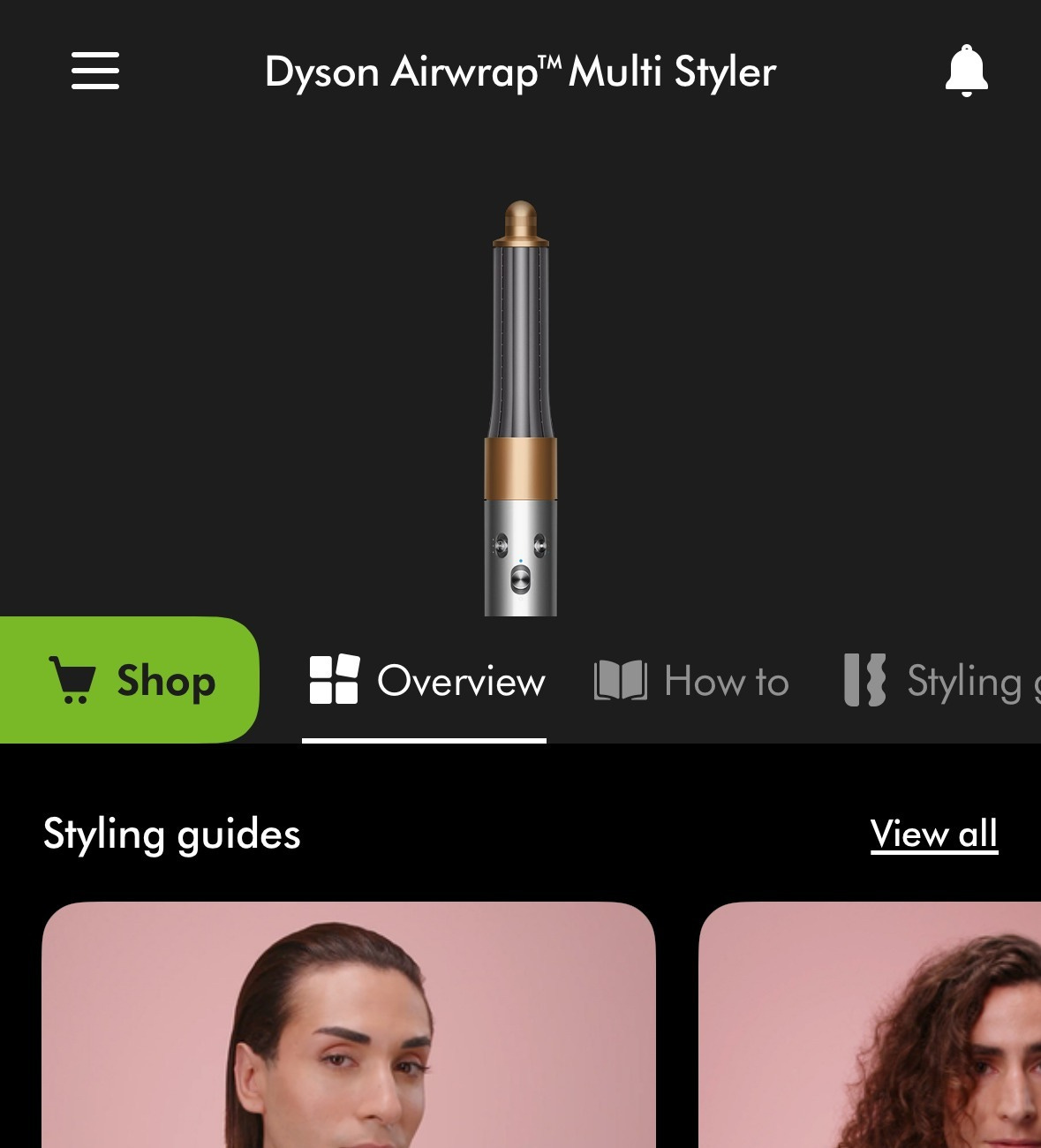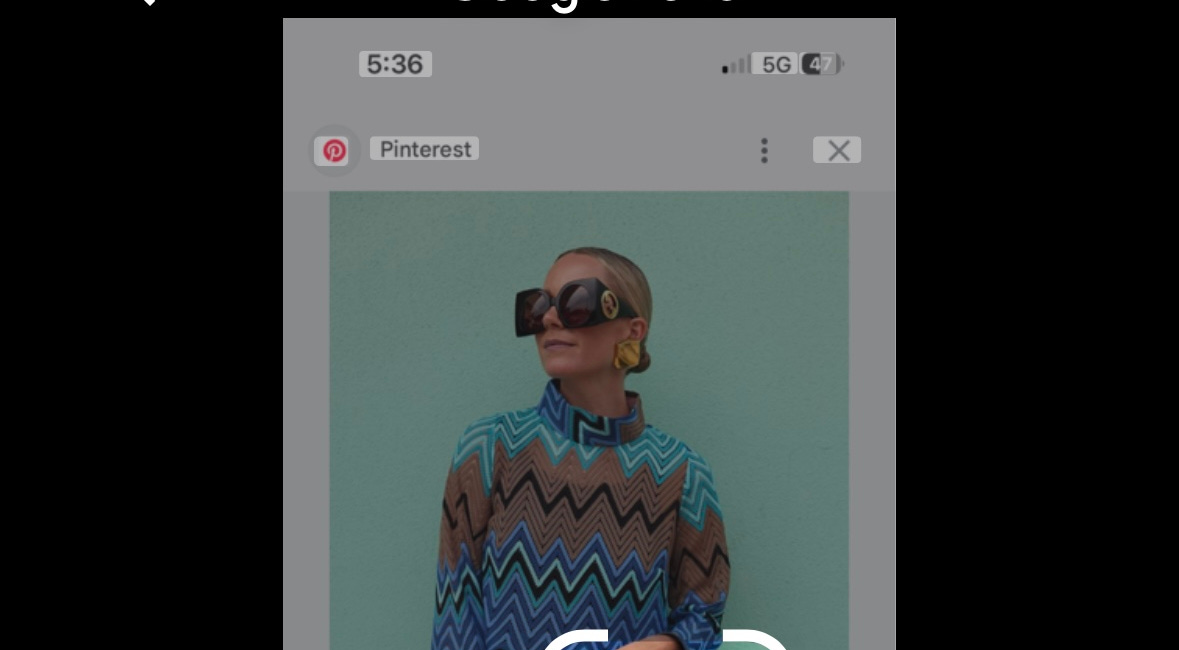This week I’m taking a break from deep-dive content to share a grab bag of fun topics that have been bouncing around in my head. I’m testing out this format for observations and interesting factoids that don’t warrant a deep dive post, but are still fun to share. As always I love your feedback about what you’re enjoying reading (or not).
To that end, I’d love your help deciding what to publish next week:
Often Overlooked: Strong Post Purchase Communications
For Christmas I received a Dyson Airwrap. I am loving it! But the learning curve is pretty steep. The Airwrap comes with several attachments that all have a specific use case - curling, taming flyaways, straightening, etc. Upon opening the package, I had no idea how to use this thing. Luckily, Dyson stepped in with some very helpful resources.
Registration and video resources
In the box, there was a QR code to scan to register the product. While I did have to download an app (a personal pet peeve), this flow was very simple and took no more than 2 minutes. Once in the app, I had access to video tutorials and resources.
Email flow to reinforce and remind
A week after I registered my Airwrap, I received a series of emails introducing the tool and re-surfacing some of the tutorials and resources. Having this content pulsed across multiple channels (app, email, and website) is a good strategy because customers are busy - this makes it more likely that we will find and use the resources.
The timing is also well thought-out. A week from registering the device gives the customer time to experiment and try things out. Perhaps at this stage, they are struggling a bit and tempted to give up on the product. Pulsing email resources now makes sense.
Opportunity for Dyson: Organic social integration with post purchase communications
I also watched a lot of tutorial videos on TikTok when researching this product and figuring out how to use it. Tying TikTok and user-generated content into the post-purchase flow (e.g., featuring relevant trending videos in post-purchase tutorial emails) is another way to drive engagement. The tutorials provided by Dyson, while useful to understand product functionality, are a bit dry. I found it more engaging to hear real customers use the product and share “hacks” from their experience. Dyson’s US TikTok channel has a relatively low follower count, while creator videos reviewing the tool have 500k+ views.
Post-purchase insights for Brands
For many brands, post-purchase communication looks something like this:
Order confirmation
Shipping updates (often from the carrier)
Delivery notification (often from the carrier)
Leave us a review (often timed too soon after the product arrives - this is another personal pet peeve)
Silence
This leaves a lot of opportunity to build a solid customer relationship and drive loyalty and repeat purchases.
Of course a brand like Dyson, which makes complex, expensive, and technical products will send communications explaining how to use the product. But I believe that many consumer brands would benefit.
In the beauty space, brands should be sending educational content on how a new serum fits within an existing skincare routine. One problem I’ve encountered when I buy a new skincare product is that I’m unsure how to order the product application with other things I already own. As a result, I may not use it as much. The Brand wants me to use this new product regularly so I see results and want to repurchase. Post-purchase communications like this can build trust and authority, encourage utilization of the product (and hence repurchase), and speak to upsell/cross-sell (did you know the new serum you just bought pairs well with this moisturizer).
In the apparel space, brands should take a similar approach, focused on how to style new items the customer has just purchased. For Christmas, I bought my husband some wool pants from J.Crew, which he really likes. But he hasn’t worn them very much because he’s not sure how to style them with other things in his wardrobe. J.Crew should be sending editorial content on how to style those pants. This again presents upsell/cross-sell opportunities to build out the full outfit. It is also an exercise in brand-building to share UGC or other content showcasing how the products are worn by real people.
Tech is a key enabler here. Taking this strategy to the next level would involve personalizing the communications, e.g. in the post-purchase summary email, allow customers to request styling guidance on specific items in their order. With adoption of AI tools to automate creation of email marketing assets, creating “how-to styling resources” for specific SKUs could be more scalable across a wide product catalog.
Implementing effective post-purchase communications has been shown to drive customer satisfaction and loyalty. Post-purchase emails see a 217% higher open rate than traditional emails, and have a 6.4% click-through rate (source). Also, lifecycle communications, including post-purchase email campaigns, generate 90% higher revenue per recipient compared to pre-purchase emails (source). Brands should be investing more here!
My AI avatar is cooler than me
I was invited to test out Doji’s private beta. Doji enables users to create an AI likeness and use it to try on real products and shop their favorite looks.
This was so fun!
Doji seems to be targeting us - individual fashion lovers - as consumers, to encourage creativity and discovery. I had tons of fun with the experience and I could see it as an effective discovery mechanism for new brands or styles. I could also see this tool being a powerful add-on for brand and retailer sites - for example, enabling an experience on a Nordstrom jeans PDP where you can see your avatar in a bunch of other shoppable looks - essentially replacing the “Shop the Look” module with something more personalized.
While not the stated purpose of Doji, I see this tech as an interesting evolution of the “smart fit” solutions that have been bouncing around the retail tech world for many years. Some of these use your preferred sizing at other brands to estimate your size at a new brand. Others use your self-reported measurements or body shape. Others use AR interfaces. Personally, I haven’t seen anything revolutionary from these tools as a shopper. I still often order multiple sizes of an item if I’m not sure about the size. Perhaps leveraging AI could be a path to encourage adoption and trust in sizing recommendations.
Big purchases on the big screen: Is there truth behind the meme?
Gen Z has found another way to make fun of us millennials. They have pointed out (accurately imo) that we tend to browse on mobile, but make our “big purchases” on the desktop screen. I admit I fall into this stereotype - I like having multiple tabs to compare before I buy! So I was curious to see what the data has to say.
What does the data say?
Yes, Gen Z shoppers are more likely to be predominantly mobile purchasers vs. millennials. But the gap isn’t as big as what the memes might suggest. A 2019 survey revealed that 55% of Gen Z consumers in the United States made most of their online purchases via smartphone, compared to 42% of Millennials (source). These numbers are a bit dated, but the generational gap is not that large.
In the industry as a whole, mobile commerce is growing at a ~2x rate vs. desktop. This holiday season saw nearly 55% of total sales on mobile across all ages - highlighting how fast things are shifting since the 2019 survey was conducted (source). This is likely due to better optimization of mobile sites for commerce, which drives comfort and trust with making increasingly larger purchases via mobile.
I look forward to seeing the memes in 20 years when the brain-computer interface has rendered mobile completely obsolete.
What I read and loved this week
published an awesome deep (haha) dive on DeepSeek, the Chinese AI firm quickly and cheaply spinning up models competitive with OpenAI and others. Read this if you are enjoying my AI series and want more details on the technical landscape behind the user-facing tools. wrote about Flip, a video shopping app that has content similar to TikTok Shop. It’s interesting to see how startups are bringing live shopping and social commerce, already huge in other parts of the world, to the US, and capitalizing on TikTok’s success. Personally, I go to TikTok for the organic content and for creators I enjoy, not for shopping. If I am inspired by something I see and want to buy it, I’m happy that Tiktok makes it easy. I am dubious that people will go to an app just to shop, unless there is a key draw, like early access to products, special discounts, etc. Really enjoyed her analysis! wrote back in October about Merit’s influencer strategy for their recent perfume launch, which included a Substack strategy. This just crossed my feed, and it’s a great evergreen breakdown of influencer marketing and how a brand can use it effectively. is a great publication on consumer research and marketing. This is a useful primer on some updated rules of the game. ICYMI
I wrote about visual search!
A picture's worth 1,000 search terms
I’m a huge fan of thrift and vintage shopping. As a result, I was a pretty early adopter of Google Lens - Google’s visual search tool. When I find something cool on the racks at Goodwill, I take a picture of the item and search in Google Lens. This tells me more details about the value and history of what I’m holding. Once, the coat I found turned out t…















Thank you for including Following Up! Merit continues to have one of the best influencer led marketing strategies.
Thank you for the shoutout Melina!